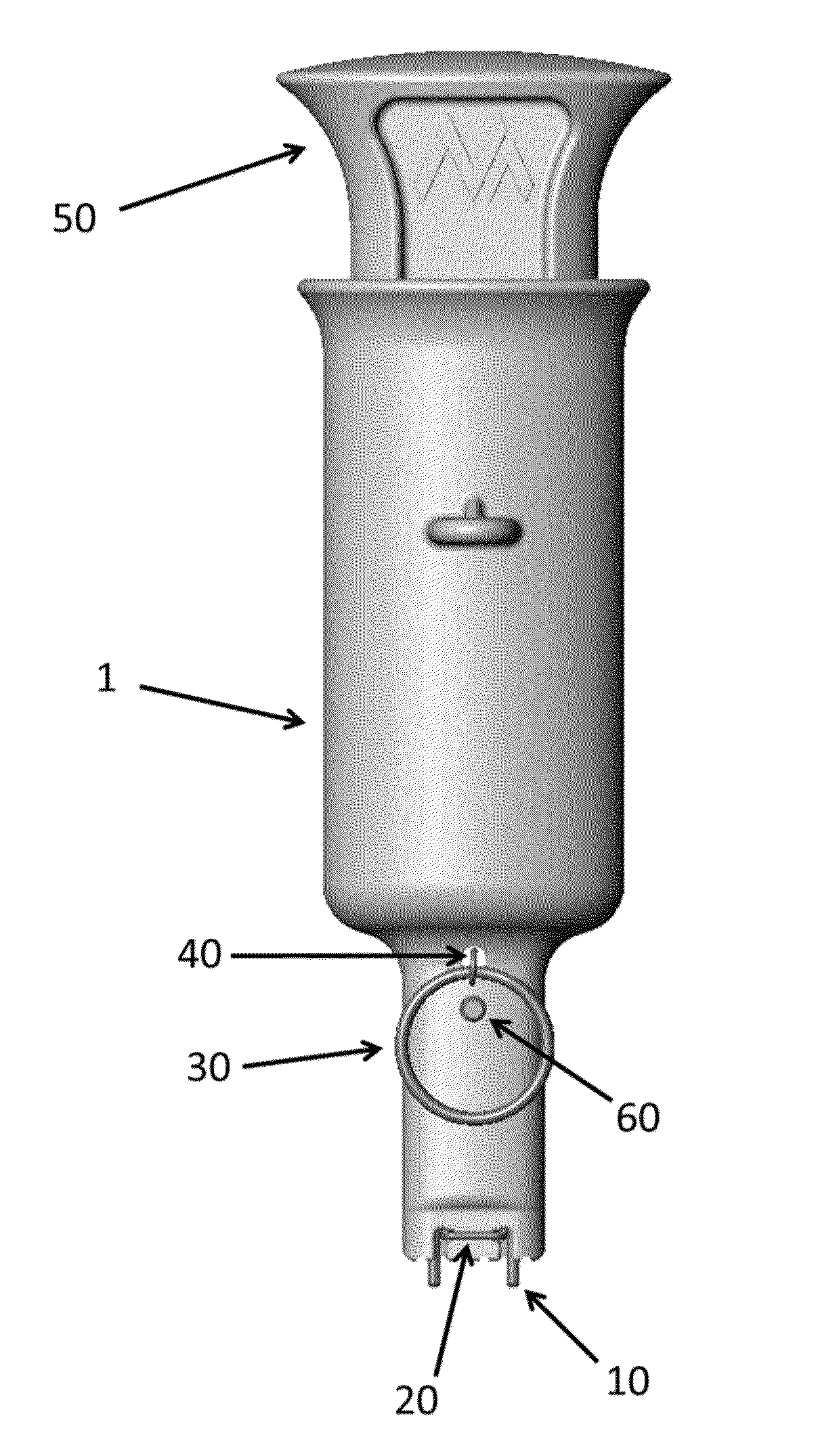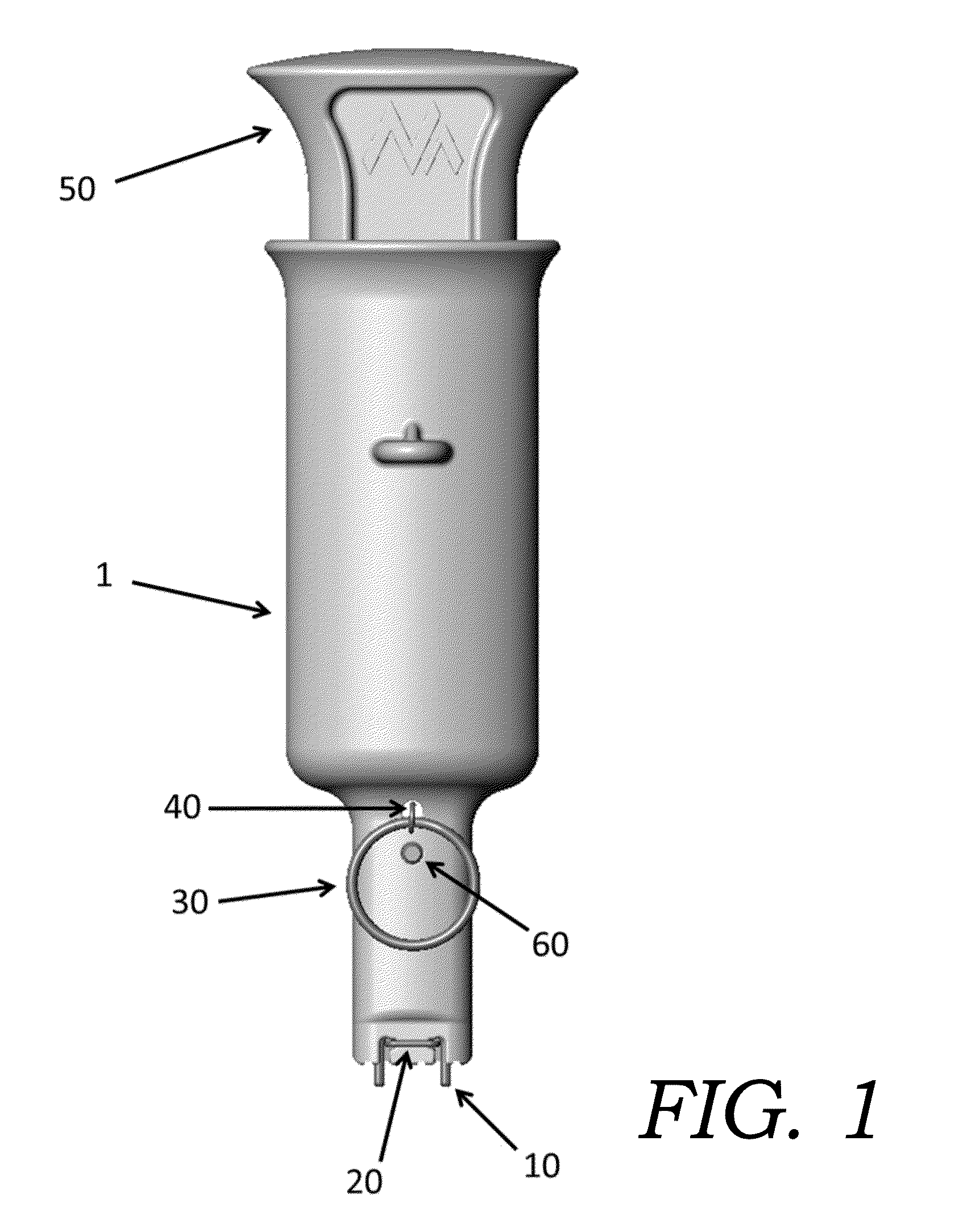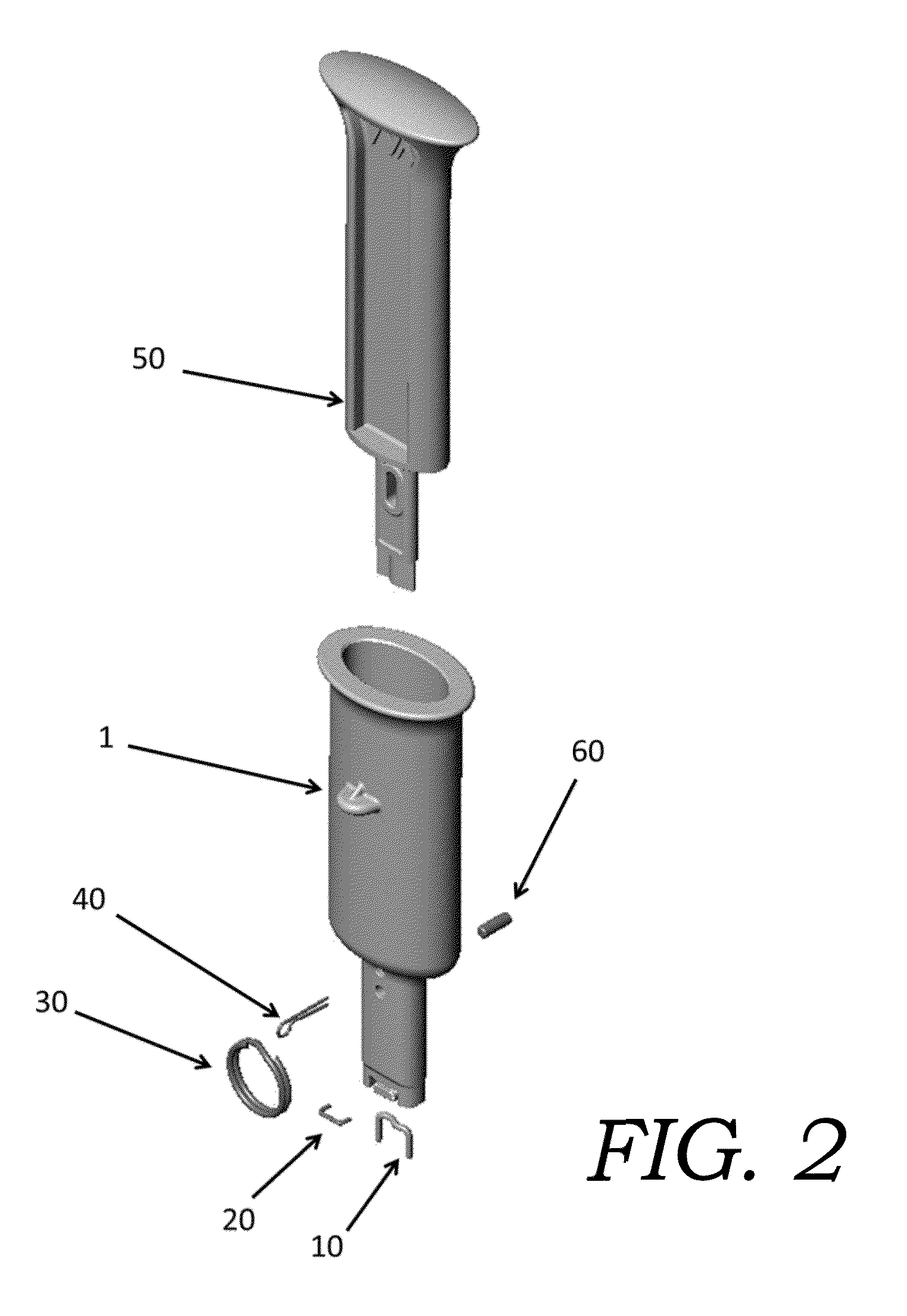Bone staple extrusion instrument and method of use and manufacturing
a technology of extrusion instruments and bone staples, applied in the direction of surgical staples, application, manufacturing tools, etc., can solve the problems of delay or non-healing, affecting the use of surgeons, and requiring surgeons to manipulate implants
- Summary
- Abstract
- Description
- Claims
- Application Information
AI Technical Summary
Benefits of technology
Problems solved by technology
Method used
Image
Examples
Embodiment Construction
[0102]The embodiments of the subject invention are staple extrusion instruments (or bone staple extrusion instruments) that are each utilized for retaining and then implanting a staple with a plurality of legs, commonly in a U- or table-shaped configuration where the U-shaped has two legs and the table-shaped has three or more legs. All staple styles independent of the number of legs have a bridge that joins the plurality of legs. The particular staple extrusion instrument is designed to receive and restrain a corresponding configuration of the staple that is to be retained and implanted using that staple extrusion instrument.
Staples
[0103]As discussed and described herein, embodiments of the present inventions include staple extrusion instruments and methods of use to implant staples in which the staples are able to move between two shapes. Generally, one shape is a “parallel” shape, and the other shape is a “non-parallel” shape. A staple has a “parallel” shape when the legs of the ...
PUM
| Property | Measurement | Unit |
|---|---|---|
| transition temperature | aaaaa | aaaaa |
| temperatures | aaaaa | aaaaa |
| temperatures | aaaaa | aaaaa |
Abstract
Description
Claims
Application Information
 Login to View More
Login to View More - R&D
- Intellectual Property
- Life Sciences
- Materials
- Tech Scout
- Unparalleled Data Quality
- Higher Quality Content
- 60% Fewer Hallucinations
Browse by: Latest US Patents, China's latest patents, Technical Efficacy Thesaurus, Application Domain, Technology Topic, Popular Technical Reports.
© 2025 PatSnap. All rights reserved.Legal|Privacy policy|Modern Slavery Act Transparency Statement|Sitemap|About US| Contact US: help@patsnap.com



